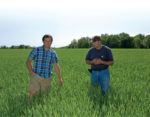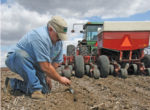Advertise Follow Us
Articles Tagged with ''yields''
New Specialty Crops Offer Bonus No-Till Income
Whether it’s soybeans, corn, sunflowers or canola, no-tillers can grow solutions to meet market demand for healthy and renewable oils, as well as more efficient ethanol production.
Read More
Maintain Strip-Till Rigs To Boost 2013 Yields
Reviewing and replacing mechanical parts and checking precision-ag components, software and rate controllers can increase your chances of profitability in the next growing season.
Read More
No-Till Brings New ‘Shade’ Of Higher Yields, Profitability
Johnny and Brian Moore’s switch to no-till, cover crops and a diverse rotation has stopped erosion, improved organic matter and made their North Carolina farm’s high-clay soils more productive.
Read More
Foliar Feeders Push For Bigger No-Till Yields
While not a replacement for well-managed soil fertility programs, foliar fertilizers — piggybacked with pesticide treatments — are helping no-tillers achieve greater yields
Read More
No-Till Operational Benchmark Study
Net Income Climbs For Most No-Tillers
While the majority of U.S. industries are slumbering or showing modest signals of a possible recovery, U.S. agriculture really hummed in 2010.
Read More









